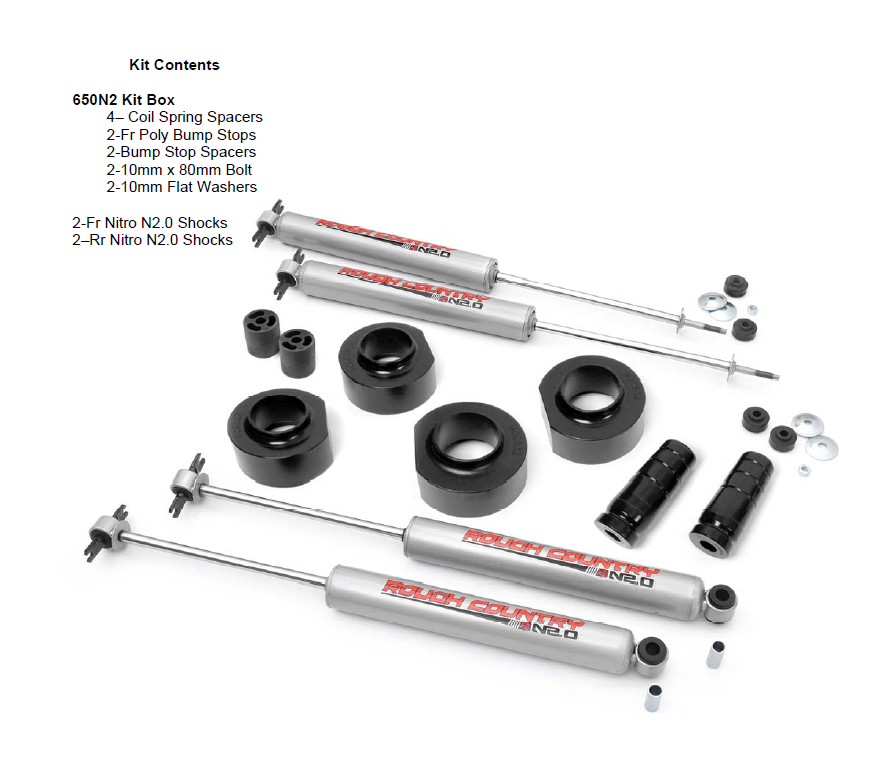

Top Sellers for Bronco Sport
How to Install a Rough Country 1.5 in. Spacer Lift Kit w/ Shocks on your 1997-2006 Wrangler TJ
Installation Time
1 days
Tools Required
- 13mm Wrench
- 15mm Wrench
- 15mm Socket
- 17mm Wrench
- 17mm Socket
- 18mm Wrench
- 19mm Deep Well Socket
- 21mm Wrench
- 21mm Socket
- T50 Torx Socket
- Jack
- Jack Stands
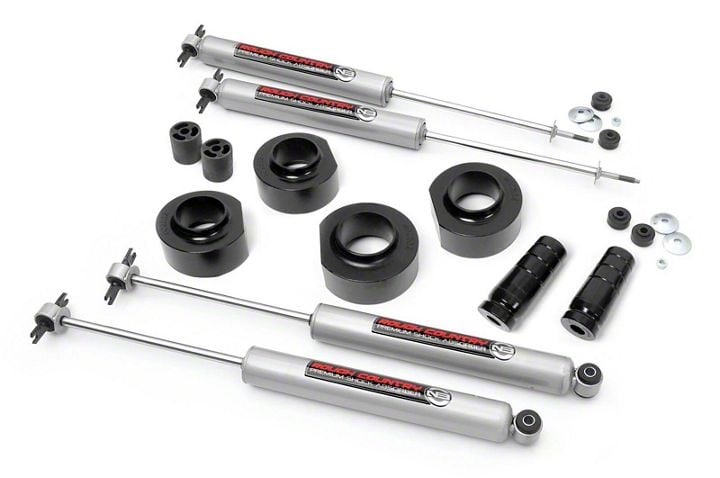
Shop Parts in this Guide
PRODUCT USE INFORMATION
As a general rule, the taller a vehicle is, the easier it will roll. Seat belts and shoulder harnesses should be worn at all times. Avoid situations where a side rollover may occur.
Generally, braking performance and capability are decreased when larger/heavier tires and wheels are used. Take this into consideration while driving. Do not add, alter, or fabricate any factory or after-market parts to increase vehicle height over the intended height of the Rough Country product purchased. Mixing component brands is not recommended.
Rough Country makes no claims regarding lifting devices and excludes any and all implied claims. We will not be responsible for any product that is altered.
If question exist we will be happy to answer any questions concerning the design, function, and correct use of our products.
This suspension system was developed using a 31X10.50X15, tire with factory wheels. Note if wider tires are used, offset wheels will be required and trimming will be required.
NOTICE TO DEALER AND VEHICLE OWNER
Any vehicle equipped with any Rough Country product should have a “Warning to Driver” decal installed on the inside of the windshield or on the vehicle’s dash. The decal should act as a constant reminder for whoever is operating the vehicle of its unique handling characteristics.
INSTALLING DEALER - it is your responsibility to install the warning decal and forward these installation instructions on to the vehicle owner for review. These instructions should be kept in the vehicle for its service.
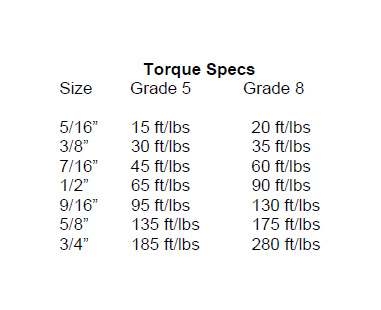
Front Installation Instructions
1. Jack up the front of the vehicle and support the vehicle with jack stands, so that the front wheels are off the ground. Chock rear wheels.
2. Remove the front tires/wheels, using a 19mm deep well socket
3. Using a T50 socket and an 18mm wrench remove the bottom sway bar bolts. Retain hardware for later use. See Photo 1
4. Push down on the axle to allow room for the coils to be removed. Remove coil springs
5. Paint or scribe alignment marks on the cam adjuster and axle bracket. See Photo 2.
6. Using a 21mm wrench and a 21mm socket remove the lower control arm nut, cam, and cam bolt from the axle. Disconnect the arm to allow downward movement of the axle.
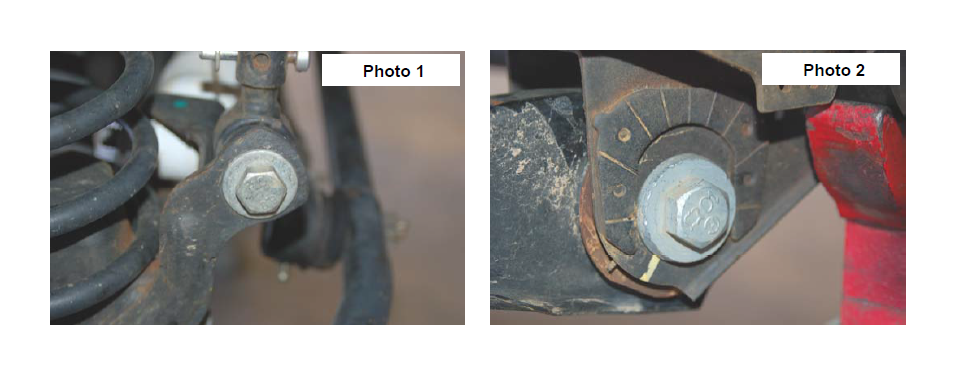
7. Using a 15mm wrench for the top and a 13mm wrench for the bottom, remove the front shocks. Retain hardware for later use.
8. Pull the rubber bump stop from the factory mount.
9. Install the coil spring spacer over the bump stop pocket and up into the mount, with the lip of the spacer pointing down. See Photo 3.
10. Reinstall the supplied extended bump stop in to the bump stop cup.
11. Reinstall the factory coil spring. See Photo 4.
12. Install the front shocks at this time. When tightening the upper shock mount, tighten until the bushing starts to slightly bulge.
13. Install the lower control arm back into the original mounting location, Insert the cam bolts, nuts and washers, into the lower control arm. Do not tighten at this time.
14. Reinstall the front tires/wheels .
15. Lower the vehicle to the ground. Align the marks that you scribed in the cam bolt and tighten bolt to 85 ft. lbs.
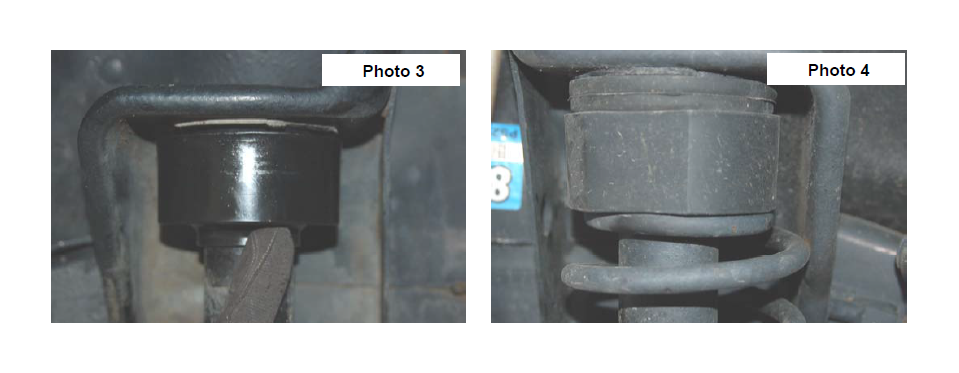
Rear Installation Instructions
1. Jack up the rear of the vehicle and support the vehicle with jack stands, so that the rear wheels are off the ground. Chock front wheels.
2. Remove the rear tires/wheels, using a 19mm deep well socket.
3. Using a 17mm wrench and 17mm socket, remove the lower sway bar bolt. Retain hardware for later use. See Photo 5.
4. Remove the factory shock absorbers.
5. Push down on the axle to allow enough room for stock coil spring to be removed. Remove the stock coil spring.
6. Remove the factory bump stop from the metal bump stop cup.
7. Using a 15mm socket unbolt the bump stop cup.
8. Install the coil spring spacer over the bump stop pocket and up into the mount, with the lip of the spacer pointing down.
9. Install the supplied bump stop spacer with the supplied 10mm 80mm bolt.
10. Using the 15mm socket re-install the bump stop cup onto the bump stop mount with the supplied spacer in between the mount and the bump stop cup with the supplied 10mm x 80mm bolt and washer.
11. Reinstall factory bump stop into cup.
12. Reinstall the factory coil spring. See Photo 6.
13. Using the17mm-wrench and 17mm socket, replace the lower sway bar bolt.
14. Install the rear shocks at this time.
15. Reinstall the rear tires/wheels.
16. Lower the vehicle to the ground.
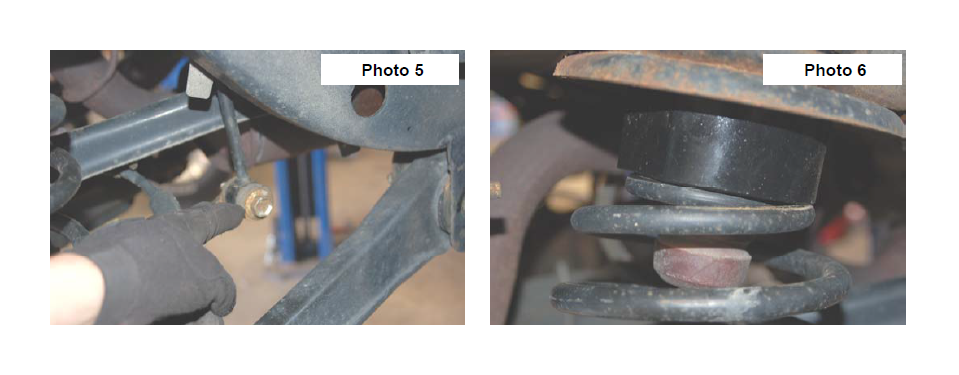
Post Installation
1. Check all fasteners for proper torque. Check to ensure there is adequate clearance between all rotating, mobile, fixed and heated members. Check steering for interference and proper working order. Test brake system.
2. Perform steering sweep. The distance between the tire sidewall and the brake hose must be checked closely. Cycle the steering from full turn to full turn to check for clearance. Failure to perform inspections may result in component failure.
3. Re torque all fasteners after 500 miles. Visually inspect components and re torque fasteners during routine vehicle service.
4. Readjust headlights to proper settings.
Maintenance Information
It is the ultimate buyers responsibility to have all bolts/nuts checked for tightness after the first 500 miles and then every 1000 miles. Wheel alignment steering system, suspension and driveline systems must be inspected by a qualified professional mechanic at least every 3000 miles
